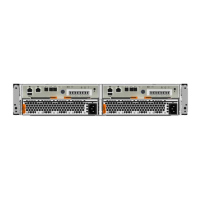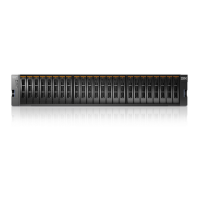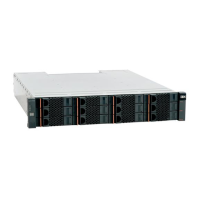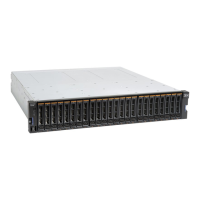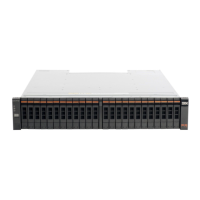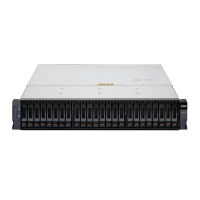822 Implementing the IBM Storwize V5000 Gen2 with IBM Spectrum Virtualize V8.1
Configuration node
While the cluster is operational, a single node in the cluster is appointed to provide
configuration and service functions over the network interface. This node is termed the
configuration node. This configuration node manages the data that describes the
clustered-system configuration and provides a focal point for configuration commands. If the
configuration node fails, another node in the cluster transparently assumes that role.
Consistency Group
A Consistency Group is a group of copy relationships between virtual volumes or data sets
that are maintained with the same time reference so that all copies are consistent in time. A
Consistency Group can be managed as a single entity.
Container
A container is a software object that holds or organizes other software objects or entities.
Contingency capacity
For thin-provisioned volumes that are configured to automatically expand, the unused real
capacity that is maintained. For thin-provisioned volumes that are not configured to
automatically expand, the difference between the used capacity and the new real capacity.
Copied state
Copied is a FlashCopy state that indicates that a copy was triggered after the copy
relationship was created. The Copied state indicates that the copy process is complete and
the target disk has no further dependency on the source disk. The time of the last trigger
event is normally displayed with this status.
Counterpart SAN
A counterpart SAN is a non-redundant portion of a redundant SAN. A counterpart SAN
provides all of the connectivity of the redundant SAN, but without 100% redundancy. IBM
Storwize V5000 canisters are typically connected to a “redundant SAN” that is made up of
two counterpart SANs. A counterpart SAN is often called a
SAN fabric.
Cross-volume consistency
A consistency group property that ensures consistency between volumes when an
application issues dependent write operations that span multiple volumes.
Data consistency
Data consistency is a characteristic of the data at the target site where the dependent write
order is maintained to ensure the recoverability of applications.
Data encryption key
The data encryption key is used to encrypt data and it is created automatically when an
encrypted object, such as an array, a pool, or a child pool, is created. It is stored in secure
memory and it cannot be viewed or changed. The data encryption key is encrypted using the
master access key.
Data migration
Data migration is the movement of data from one physical location to another physical
location without the disruption of application I/O operations.

